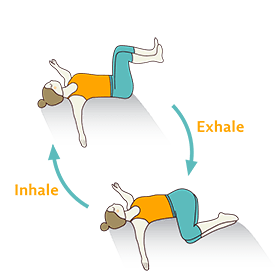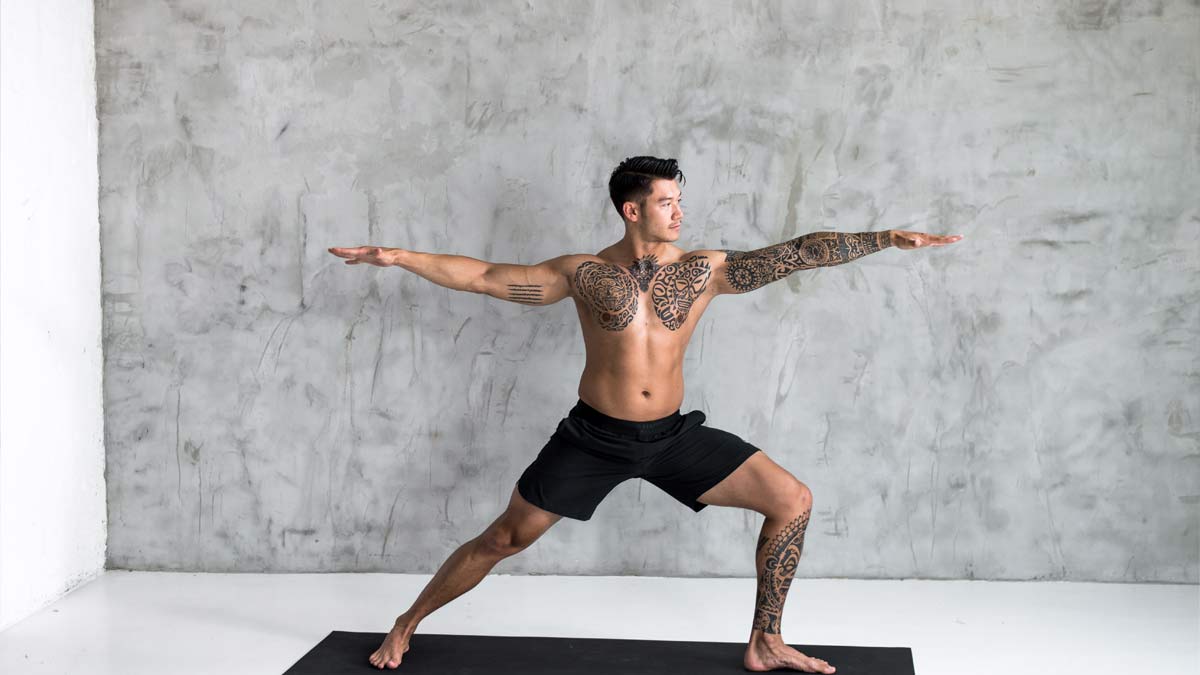
Vinyasaflow yoga is a form of yoga that integrates core work and standing series with flow elements. It also includes inversion options and poses that strengthen and improve balance. This yoga form is perfect for athletes, as well as those who are looking to strengthen their joints and bodies without having to carry a lot of weight.
You can flow from one pose into the next.
Vinyasa flow requires that the body and mind be committed to each pose. This type of yoga requires you to maintain a steady breathing rhythm. This breathing technique has been called "ujjayi". Vinyasa is to flow from one pose or position to another.
This style of yoga improves flexibility and decreases stiffness. Vinyasa flows encourage the body to strengthen and stretch every muscle. Vinyasa is generally warm. This allows muscles to relax and be more open for deep stretching.

Fluid transitions
Vinyasa flow's benefits include the ability to effortlessly transition between poses. These transitions build strength, flexibility, and stamina. They also help calm the mind. They are both suitable for intermediate and novice practitioners. It is important that you communicate with the instructor if there are any limitations or difficult poses.
Although flow in vinyasa flow classes can be difficult, it is possible to make transitions between poses fluid and easy. You can also focus on breath control and the coordination of movement with the breath in this style of yoga. Ana Costa's Vinyasa flow class at Wednesday night is a wonderful choice for anyone new to the practice, or who has just recovered from an injury. Ana Costa holds a PhD and an anatomy background, which allows her to adapt the flow of the class for students with specific needs.
Stabilization of joints
Vinyasa flow can be considered one of the most intense forms of yoga. It is the basis for many power yoga classes. It helps to build muscle and supports arthritis-prone joints. This can reduce pain and improve range of movement. With a regular practice, joint pain can be minimized.
Vinyasa flow, a fast-paced movement, helps to increase flexibility of joints and muscles. Each muscle is strengthened and stretched during the practice. The warm movement encourages deeper stretching.

Stress relief
Yoga can be a wonderful option for stress relief. Vinyasa flow classes can provide many benefits including increased blood flow, better focus, and a healthier body. These classes take only 30 minutes. You don't need to be a certified yoga instructor to reap the benefits.
Vinyasa yoga flow yoga involves synchronized movement and breathing. It includes a series of postures, such as lunges and sun salutations. Some poses, like the Easy Pose are very calming. These poses improve posture and strengthen the back.
FAQ
How much yoga is too much?
It's important that you remember yoga isn't a sport. There is no limit to how many times you can do before you get tired. Instead, take the time to enjoy each step and be patient.
It's okay to fall off the wagon every now and again. Don't worry if you lose your way once in a while.
You can start by doing 10 to 15 minute sessions, then build up to more advanced classes.
After I do yoga, will my clothes still fit?
It is most likely that yes. Most yoga pants have elastic waists, and they stretch when worn. You should find them comfortable enough to wear during exercise without feeling restrictive.
It might be more difficult to find the right yoga pants if you have recently lost weight. In this case, you might want to consider wearing leggings or shorts instead.
What are the side effects of yoga?
Yoga has risks like any other form of physical activity. The main risk is injury. You should be able to safely perform each pose.
Yoga can make you dizzy or faint if your first time doing it.
This is caused due to blood clotting in your brain. It will pass quickly, so don't be alarmed.
If you experience chest pains while doing downward-facing dogs, make sure you don't hold your breath. It will only make the situation worse and increase your heart rate.
Is 20 minutes of yoga enough for a daily workout?
Yoga should not be viewed as just exercise but as an opportunity for self-discovery. It is a chance to reflect on the life you lead and the choices that have been made.
My friend introduced yoga to me a few decades ago. She had been practicing for many years. He told me that he did yoga for 20 minutes each morning, which helped him feel calmer throughout the rest of his day.
I tried it, and it was a great way to improve my overall health. I have continued practicing yoga every day since and find it helps me relax and concentrate when I am at my desk.
The key is finding what works best for you and setting realistic goals. Yoga does not have to be an exhausting activity.
How long do yoga lessons last?
Yoga classes can last from 45 minutes to 90. Some teachers offer shorter or longer sessions, at different times during the week.
Statistics
- According to the Agency for Healthcare Research and Quality, falls are incredibly common among older adults in nursing facilities. Even the simplest ones can increase the risk of death (24). (healthline.com)
- Start your Fall off right with 20% off All Access Membership when you sign up by 9/25! (corepoweryoga.com)
- The people in the yoga group were 37 percent more likely to have quit smoking by the end of the 8-week program. (nccih.nih.gov)
- The American Psychological Association recently shared that 84% of American adults feel the impact of prolonged stress (5). (healthline.com)
- According to calorie estimates calculated at Harvard Medical School, the average 125-pound person burns about 120 calories in a half hour of hatha yoga, and a 185-pound person burns about 178 calories in that half hour. (everydayhealth.com)
External Links
How To
Is yoga a good fitness exercise?
Yoga isn't for people who just want to lose weight. It can also help you achieve flexibility, balance, coordination and strength.
Yoga isn’t just exercise. Instead, it’s an art form. These poses can help you to relax and calm down. These poses help improve our posture, concentration, breathing, and overall health.
Yoga is a practice of yoga. Yogis follow various forms of yoga, including Hatha, Ashtanga, Iyengar, Vinyasa, Bikram, Kundalini, Yin Yang, and Restorative.
There are many kinds of yoga. However, all share similar goals. Each type focuses differently on health and wellbeing. You can choose from meditation, pranayama or Hatha yoga.
These yoga moves don't require any equipment
-
Sun Salutation – The series of 12 positions starts with forward bend followed by 10 poses.
-
Warrior pose - A warrior pose can be achieved by holding a stick/staff.
-
Triangle Pose – This is a pose where you raise one leg behind your head and bend at the knee.
-
Standing Forward Bend – This is a pose where you sit on the ground with your legs straightening and then fold forward at the waist.
-
Seated Twist: This is a pose that can be done while seated on a mat or in a chair.
-
Cobra Pose: This position is done lying on your back, arms raised.
-
Child's Pose - This pose is done while lying face up on the ground.
-
Cat/Cow Pose - This pose combines a cat and cow pose. While lying face down, raise your upper body off the ground. Now roll to your side, and then place your hands below your shoulders.
-
Head Tilt – This pose involves tilting your head back, while your eyes are closed.
-
Shoulder stand - This position involves standing straight up with your arms and feet raised above the head.
-
Tree Pose - This pose is achieved while kneeling on your knees with both hands placed underneath your shoulders.
-
Bow Pose – This is when you bend forward from your hips and place your hands on the ground.
-
Corpse Pose - This pose is held for five minutes.
-
Mountain Pose: This pose is known as mountain pose, because it requires you to stand tall and keep your spine straight.
-
Legs up the Wall Pose: This pose requires that you hang upside-down on a wall.
-
Side Angle Pose -- This pose requires you to lean against a wall and place your right arm in front of the wall.
-
Plank Position – When you are lying flat on your stomach, and your left arm and right leg extend apart from one another, this is called the plank position.
-
Bridge Pose – Balance on your elbows while balancing on the toes in this pose.
-
Reverse Table Top Pose - This pose is attained by lying on your tummy and reaching your arms toward the ceiling.
-
Handstand: This pose requires balance as well as strength. To do this pose, you can either hold yourself between two walls or a door frame.
-
Half Moon Pose- Also known as Hero Pose. It is performed by standing on your hands and toes.
-
Handstand or Headstand - This pose requires balance and strength. This pose can either be performed on a wall or with a doorframe.
-
Forearm Balance: This pose requires that your forearms rest on the tabletop.
-
Spinal twist - This is a pose where your belly lies while your arms reach your arms.
-
Supported Bound Angle Pose - This pose requires balance and support. To lean on a sturdy object, such as a tree trunk or an old beam, you'll need one.
-
Wide Leg Forward - This position involves extending your legs and touching your toes.
-
Single Pigeon Pose -- This pose is similar in style to the forward fold with one leg, but it only involves one leg.
-
Extended Puppy Dog Poses are very relaxing. It's done by extending your legs outward and bending your knees.
-
Seated Forward Bend - This pose is sitting cross-legged and stretching your hamstrings and calves.
-
Crow Pose: This pose is very difficult, but it's rewarding once you get the hang of it. This is achieved by elevating your arms above your head, and then lowering your arms until they are parallel to the ground.